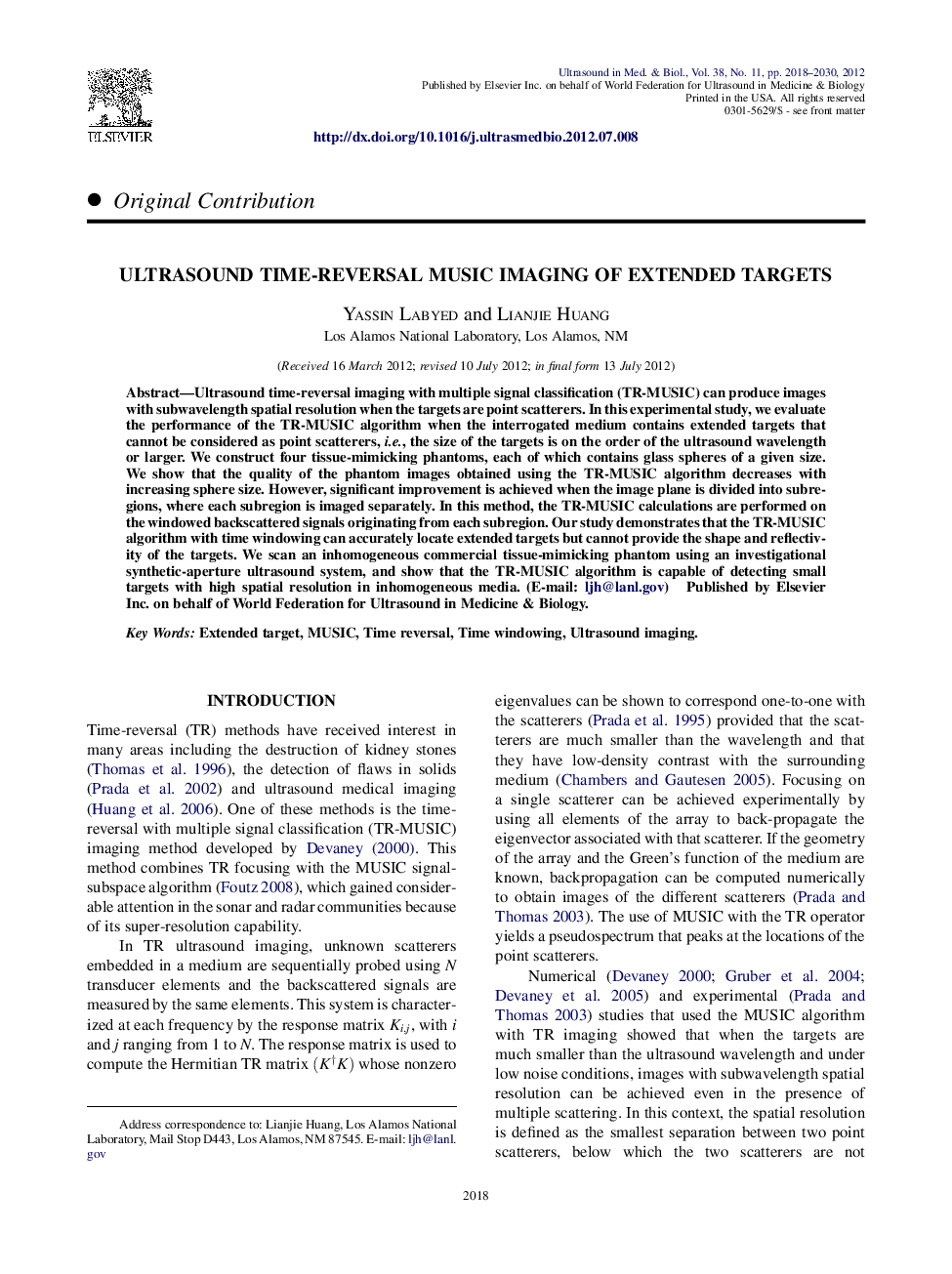| Article ID | Journal | Published Year | Pages | File Type |
|---|---|---|---|---|
| 1761501 | Ultrasound in Medicine & Biology | 2018 | 13 Pages |
Abstract
Ultrasound time-reversal imaging with multiple signal classification (TR-MUSIC) can produce images with subwavelength spatial resolution when the targets are point scatterers. In this experimental study, we evaluate the performance of the TR-MUSIC algorithm when the interrogated medium contains extended targets that cannot be considered as point scatterers, i.e., the size of the targets is on the order of the ultrasound wavelength or larger. We construct four tissue-mimicking phantoms, each of which contains glass spheres of a given size. We show that the quality of the phantom images obtained using the TR-MUSIC algorithm decreases with increasing sphere size. However, significant improvement is achieved when the image plane is divided into subregions, where each subregion is imaged separately. In this method, the TR-MUSIC calculations are performed on the windowed backscattered signals originating from each subregion. Our study demonstrates that the TR-MUSIC algorithm with time windowing can accurately locate extended targets but cannot provide the shape and reflectivity of the targets. We scan an inhomogeneous commercial tissue-mimicking phantom using an investigational synthetic-aperture ultrasound system, and show that the TR-MUSIC algorithm is capable of detecting small targets with high spatial resolution in inhomogeneous media.
Related Topics
Physical Sciences and Engineering
Physics and Astronomy
Acoustics and Ultrasonics
Authors
Yassin Labyed, Lianjie Huang,
